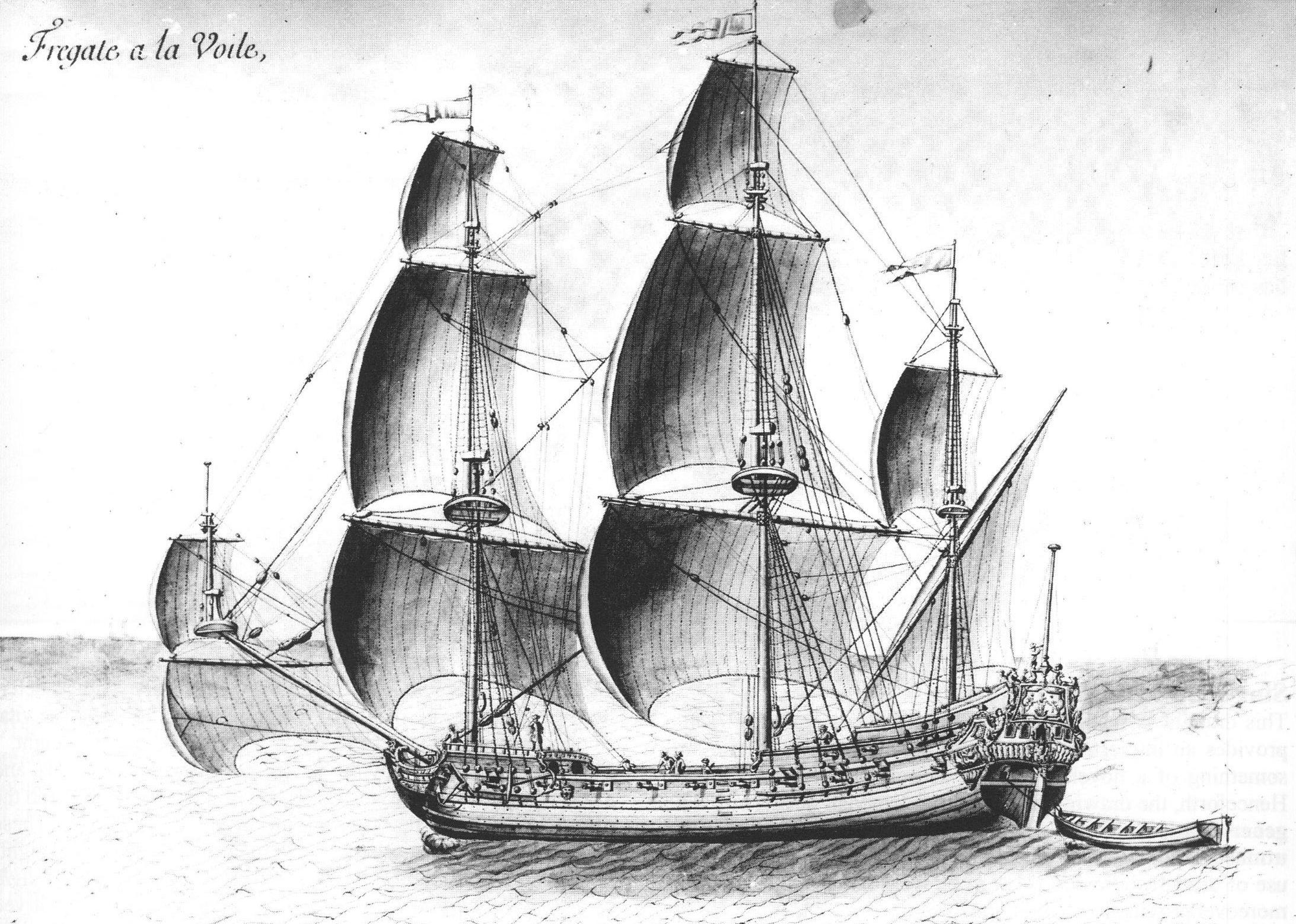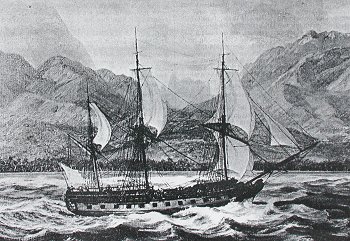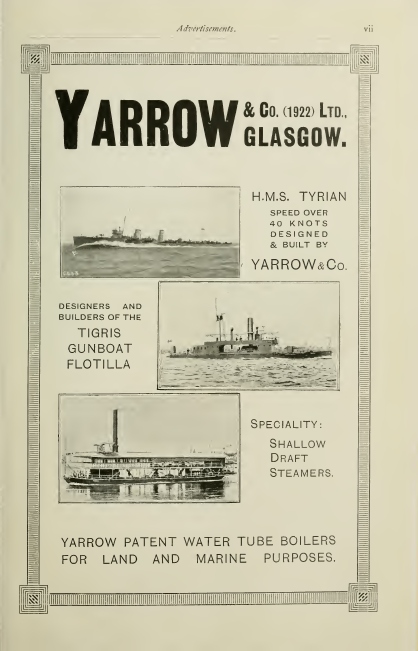|
KD Rahmat
KD (''Kapal Diraja = Royal Ship'') ''Rahmat'' (pennant number F24) was a frigate operated by the Royal Malaysian Navy. The ship was ordered in 1966 as ''Hang Jebat''. Development The design emphasised simplicity and economy but had an unusual machinery layout with a gas turbine and a diesel driving two propellers via a gearbox in a CODOG (Combined Diesel or Gas) arrangement. The ship's design served as the basis for built for the Thai Navy by Yarrows. KD ''Rahmat'' was also the first ship in the region to be fitted with surface-to-air missile system. The Sea Cat surface-to-air missile system was removed during a 1982 refit and was replaced by an additional 40 mm Bofors gun.Baker 1998, pp. 494–495. Originally configured as an anti-submarine warfare Anti-submarine warfare (ASW, or in older form A/S) is a branch of underwater warfare that uses surface warships, aircraft, submarines, or other platforms, to find, track, and deter, damage, or destroy enemy submarines. ... [...More Info...] [...Related Items...] OR: [Wikipedia] [Google] [Baidu] |
Royal Malaysian Navy
The Royal Malaysian Navy (RMN, ms, Tentera Laut Diraja Malaysia; TLDM; Jawi: ) is the naval arm of the Malaysian Armed Forces. RMN is the main agency responsible for the country's maritime surveillance and defense operations. RMN's area of operation consists of 603,210 square kilometers covering the country's coastal areas and Exclusive Economic Zones (EEZ). RMN also bears the responsibility of controlling the country's main Sea Lines of Communications (SLOC) such as the Straits of Malacca and the Straits of Singapore and also monitors national interests in areas with overlapping claims such as in Spratly. History Straits Settlement Royal Naval Volunteer Reserve The Royal Malaysian Navy can trace its roots to the formation of the Straits Settlement Royal Naval Volunteer Reserve (SSRNVR) in Singapore on 27 April 1934 by the British colonial government in Singapore. The SSRNVR was formed to assist the Royal Navy in the defence of Singapore, upon which the defence of the ... [...More Info...] [...Related Items...] OR: [Wikipedia] [Google] [Baidu] |
Limbo (weapon)
Limbo, or Anti Submarine Mortar Mark 10 (A/S Mk.10), was the final development of the forward-throwing anti-submarine weapon Squid, designed during the Second World War and was developed by the Admiralty Underwater Weapons Establishment in the 1950s. Limbo was installed on the quarterdeck of Royal Navy escort ships from 1955 to the mid-1980s, Australian–built destroyer and s. Limbo was widely employed by the Royal Canadian Navy, being incorporated into all destroyer designs from the late 1950s to the early 1970s, including the , , , and classes and the Type 12 President Class frigates built for the South African Navy in the 1960s. Operation Limbo was loaded and fired automatically with the crew under-cover and was stabilised in pitch and roll. The firing distance of the mortars was controlled by opening gas vents; rounds could be fired from . The weapon was linked to the sonar system of the ship, firing on command when the target was in range. The rounds were projected so ... [...More Info...] [...Related Items...] OR: [Wikipedia] [Google] [Baidu] |
Frigates Of The Royal Malaysian Navy
A frigate () is a type of warship. In different eras, the roles and capabilities of ships classified as frigates have varied somewhat. The name frigate in the 17th to early 18th centuries was given to any full-rigged ship built for speed and maneuverability, intended to be used in scouting, escort and patrol roles. The term was applied loosely to ships varying greatly in design. In the second quarter of the 18th century, the 'true frigate' was developed in France. This type of vessel was characterised by possessing only one armed deck, with an unarmed deck below it used for berthing the crew. Late in the 19th century (British and French prototypes were constructed in 1858), armoured frigates were developed as powerful ironclad warships, the term frigate was used because of their single gun deck. Later developments in ironclad ships rendered the frigate designation obsolete and the term fell out of favour. During the Second World War the name 'frigate' was reintroduced to des ... [...More Info...] [...Related Items...] OR: [Wikipedia] [Google] [Baidu] |
1967 Ships
Events January * January 1 – Canada begins a year-long celebration of the 100th anniversary of Canadian Confederation, Confederation, featuring the Expo 67 World's Fair. * January 5 ** Spain and Romania sign an agreement in Paris, establishing full consular and commercial relations (not diplomatic ones). ** Charlie Chaplin launches his last film, ''A Countess from Hong Kong'', in the UK. * January 6 – Vietnam War: United States Marine Corps, USMC and Army of the Republic of Vietnam, ARVN troops launch ''Operation Deckhouse Five'' in the Mekong Delta. * January 8 – Vietnam War: Operation Cedar Falls starts. * January 13 – A military coup occurs in Togo under the leadership of Étienne Eyadema. * January 14 – The Human Be-In takes place in Golden Gate Park, San Francisco; the event sets the stage for the Summer of Love. * January 15 ** Louis Leakey announces the discovery of pre-human fossils in Kenya; he names the species ''Proconsul nyanzae, Kenyapithecus africanus ... [...More Info...] [...Related Items...] OR: [Wikipedia] [Google] [Baidu] |
Ships Built On The River Clyde
A ship is a large watercraft that travels the world's oceans and other sufficiently deep waterways, carrying cargo or passengers, or in support of specialized missions, such as defense, research, and fishing. Ships are generally distinguished from boats, based on size, shape, load capacity, and purpose. Ships have supported exploration, trade, warfare, migration, colonization, and science. After the 15th century, new crops that had come from and to the Americas via the European seafarers significantly contributed to world population growth. Ship transport is responsible for the largest portion of world commerce. The word ''ship'' has meant, depending on the era and the context, either just a large vessel or specifically a ship-rigged sailing ship with three or more masts, each of which is square-rigged. As of 2016, there were more than 49,000 merchant ships, totaling almost 1.8 billion dead weight tons. Of these 28% were oil tankers, 43% were bulk carriers, and 13% were cont ... [...More Info...] [...Related Items...] OR: [Wikipedia] [Google] [Baidu] |
Lumut, Malaysia
Lumut is a coastal town (population 31,880) and mukim in Manjung District, Perak, Malaysia, situated about from Ipoh, from the town of Sitiawan and it is the main gateway to Pangkor, Pangkor Island before established Marina Island Pangkor as second gateway. It is noted for seashell and Coral (precious), coral handicrafts. This once little-known fishing town has since become the home base of the Royal Malaysian Navy and the site of the biggest naval shipbuilder in Malaysia, Boustead Heavy Industries Corporation, Boustead. Lumut in Malay Language, Malay means moss, lichen, or seaweed. In its early days, the beach was said to be rich in moss, so the local people called it Lumut. Lumut jetty is the staging-off point to offshore islands, including Pangkor Island and Manjung#Marina Island Pangkor, Marina Island. History Lumut has a sheltered jetty. A large Hock Chew community moved from there to Sitiawan. The estuary was formerly characterized by damp mossy soils on reddish earth. T ... [...More Info...] [...Related Items...] OR: [Wikipedia] [Google] [Baidu] |
Anti-submarine Warfare
Anti-submarine warfare (ASW, or in older form A/S) is a branch of underwater warfare that uses surface warships, aircraft, submarines, or other platforms, to find, track, and deter, damage, or destroy enemy submarines. Such operations are typically carried out to protect friendly shipping and coastal facilities from submarine attacks and to overcome blockades. Successful ASW operations typically involved a combination of sensor and weapon technologies, along with effective deployment strategies and sufficiently trained personnel. Typically, sophisticated sonar equipment is used for first detecting, then classifying, locating, and tracking a target submarine. Sensors are therefore a key element of ASW. Common weapons for attacking submarines include torpedoes and naval mines, which can both be launched from an array of air, surface, and underwater platforms. ASW capabilities are often considered of significant strategic importance, particularly following provocative instances ... [...More Info...] [...Related Items...] OR: [Wikipedia] [Google] [Baidu] |
Hang Jebat
Hang Jebat ( Jawi: هڠ جيبت) was the closest companion of the legendary Malaccan hero Hang Tuah. Regarded in Malaysia as one of the greatest silat exponents in history, he is well known for his vengeful rebellion against the Malacca Sultan whom he served. He can also be regarded as an early Malay anarchist following his rebellion against the ruler. Story After Hang Tuah was sentenced to death, Hang Jebat was conferred the coveted Taming Sari kris, a weapon formerly used by Hang Tuah. Believing that Hang Tuah was unjustly murdered by the sultan he served, Hang Jebat turned against the ruler to avenge his friend's death. No one knew that the ''bendahara'' (chief minister) went against the royal decree and hid Hang Tuah in a remote area. With the kris in his possession, Hang Jebat was undefeatable and there was not one person in the palace who was capable of killing him. Hang Jebat's revenge allegedly became a palace killing spree or furious rebellion against the sultan (so ... [...More Info...] [...Related Items...] OR: [Wikipedia] [Google] [Baidu] |
Frigate
A frigate () is a type of warship. In different eras, the roles and capabilities of ships classified as frigates have varied somewhat. The name frigate in the 17th to early 18th centuries was given to any full-rigged ship built for speed and maneuverability, intended to be used in scouting, escort and patrol roles. The term was applied loosely to ships varying greatly in design. In the second quarter of the 18th century, the 'true frigate' was developed in France. This type of vessel was characterised by possessing only one armed deck, with an unarmed deck below it used for berthing the crew. Late in the 19th century (British and French prototypes were constructed in 1858), armoured frigates were developed as powerful ironclad warships, the term frigate was used because of their single gun deck. Later developments in ironclad ships rendered the frigate designation obsolete and the term fell out of favour. During the Second World War the name 'frigate' was reintroduced to ... [...More Info...] [...Related Items...] OR: [Wikipedia] [Google] [Baidu] |
Surface-to-air Missile
A surface-to-air missile (SAM), also known as a ground-to-air missile (GTAM) or surface-to-air guided weapon (SAGW), is a missile designed to be launched from the ground to destroy aircraft or other missiles. It is one type of anti-aircraft system; in modern armed forces, missiles have replaced most other forms of dedicated anti-aircraft weapons, with anti-aircraft guns pushed into specialized roles. The first attempt at SAM development took place during World War II, but no operational systems were introduced. Further development in the 1940s and 1950s led to operational systems being introduced by most major forces during the second half of the 1950s. Smaller systems, suitable for close-range work, evolved through the 1960s and 1970s, to modern systems that are man-portable. Shipborne systems followed the evolution of land-based models, starting with long-range weapons and steadily evolving toward smaller designs to provide a layered defence. This evolution of design increasin ... [...More Info...] [...Related Items...] OR: [Wikipedia] [Google] [Baidu] |
Yarrow Shipbuilders
Yarrow Shipbuilders Limited (YSL), often styled as simply Yarrows, was a major shipbuilding firm based in the Scotstoun district of Glasgow on the River Clyde. It is now part of BAE Systems Surface Ships, owned by BAE Systems, which has also operated the nearby Govan shipyard (formerly Fairfields) since 1999. History Origins in London The company was founded by Alfred Yarrow, later Sir Alfred Yarrow, 1st Baronet, in the year 1865 as Yarrow & Company, Limited. Originally it was based at Folly Wall, Poplar, then in 1898 as the company grew, Yarrow moved his shipyard to London Yard, Cubitt Town.History of London Yard by Angela Brown and Ron Coverson, 2001 Hundreds of steam launches, lake and river vessels, and eventually the |
Sea Cat
Seacat was a British short-range surface-to-air missile system intended to replace the ubiquitous Bofors 40 mm gun aboard warships of all sizes. It was the world's first operational shipboard point-defence missile system, and was designed so that the Bofors guns could be replaced with minimum modification to the recipient vessel and (originally) using existing fire-control systems. A mobile land-based version of the system was known as Tigercat. The initial GWS.20 version was manually controlled, in keeping with the need for a rapidly developed and deployed system. Several variants followed; GWS.21 added radar-cued manual control for night and bad-weather use, GWS.22 added a SACLOS automatic guidance mode, and the final GWS.24 had fully automatic engagement. Tigercat saw relatively brief service before being replaced in British service by the Rapier, while Seacat saw longer service until being replaced by Sea Wolf and newer technology close-in weapons systems. Seacat and Tiger ... [...More Info...] [...Related Items...] OR: [Wikipedia] [Google] [Baidu] |
_c1963.jpg)





